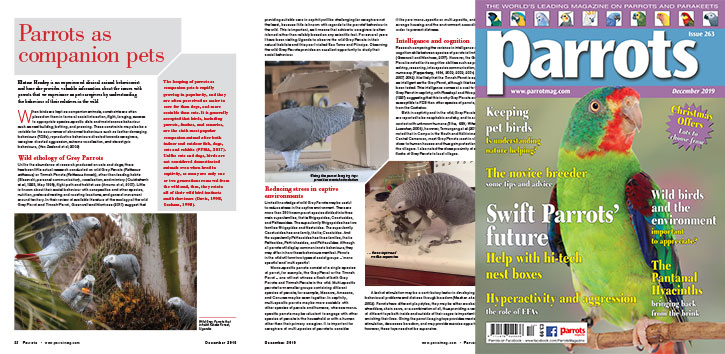
By Elaine Henley
The keeping of parrots as companion pets is rapidly growing in popularity, and they are often perceived as easier to care for than dogs, and more sociable than cats. It is generally accepted that birds, including parrots, finches, and canaries, are the sixth most popular companion animal after both indoor and outdoor fish, dogs, cats and rabbits (PFMA, 2017). Unlike cats and dogs, birds are not considered domesticated animals even when bred in captivity, as many are only one or two generations removed from the wild and, thus, they retain all of their wild bird instincts and behaviours (Davis, 1998, Graham, 1998).
When birds are kept as companion animals, constraints are often placed on them in terms of social interaction, flight, foraging, access to appropriate species-specific diets and maintenance behaviour such as nest building, bathing, and preening. These constraints may also be a variable for the occurrence of abnormal behaviours such as feather damaging behaviours (FDBs), reproductive behaviours directed towards caregivers, caregiver directed aggression, extreme vocalisation, and stereotypic behaviours, (Van Zeeland et al, 2009).








Parrot Chat
Buyers Guides
Breeding articles